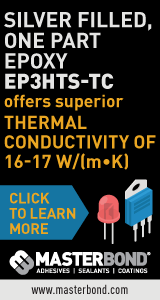|

|
|
|
||||||||
Predicting Mid-Chip Solder Balling
Board Talk
|
||||||||
TranscriptPhil And welcome to Board Talk with Phil Zarrow and Jim Hall of ITM Consulting, also known as The Assembly Brothers on this forum. We are here to talk about processes, methodologies, equipment and whatever may be bothering you with regard to your assembly process. Jim, today it looks like we have a solder ball question. Good old solder balls. This is from R.W. R.W. says we have experienced mid-chip solder balling on some passes. Is there a mathematical calculation that can be used to predict solder balling for a given package size? We would like to design our stencil apertures to ensure no mid-chip solder balls. Again, is there a mathematical way to help with this? Jim Defining mid-chip solder balls for all of our listeners and viewers out there. These occur typically on larger chip components (0603s and up) where a large solder ball forms in the center of the package between the two leads, under or right off to the side of the package. Some people call it solder bead, or mid-chip solder ball. And how does that form, Phil? Phil We have seen them most predominantly on ceramic capacitors. Typically, you characterize a lot of these ceramic capacitors is you have a metal end cap, the end of the ceramic, and dissimilarity in the bottom side topography when the component is placed tends to squeeze solder that is on the inner area of the pad inward. In other words, under the chip. And of course, it breaks off of the pad. It forms a big old nasty solder ball, otherwise known as mid-chip. That is where we predominantly see it. I am willing to bet that R.W. is primarily seeing it on ceramic chip capacitors. So, with regard to his question I would say mathematics not withstanding there is an aperture design that you can use that has been used in the industry for quite some time. It is known as the home plate aperture. Jim The shape of the aperture is rectangular on three sides and on the fourth side instead of having a flat, straight line, you have two edges that form a point going out. It looks like home plate on a baseball diamond. It has three sides rectangular and then a point sticking out of the other one. These are designed to be with the outer bounds, that means the three sides and the point at the edges of a square or rectangular pad. So that the aperture is not printing on the entire area of the pad. What you are not printing are the two triangles on the fourth side where the opening points out. These are typically oriented so that the point is pointing toward the center of the chip, explicitly so that there is less solder deposited from the aperture on the pad, under the metallization on the chip component that is underneath the package. When we print these home plate patterns, when you go place your chip into the solder paste with your pick and place machine, pushing it down into the paste between a third or two thirds, 50%, there is less paste in that area of the pad where between the termination on the bottom of the chip and the pad surface of the board. There is less solder in that area of the pad to be squished out onto the bare laminate between the two pads underneath the chip. It is amazing how difficult this is to describe something that is so simple with a line drawing. Phil Pull up a picture here. Jim Unfortunately, we don't have that. The bottom line is if you design an aperture that produces less volume of solder underneath the chip between the termination on the chip and the pad. So that when you place the pad into the solder paste there is less paste that gets squished out. So therefore, less possibility that some of that paste will not coalesce back onto the pad during reflow and will form a mid-chip solder ball. In terms of mathematics, there is no formula that I know. Theoretically you would have to adapt this pattern and try a couple of variations in terms of the amount on the point end of the aperture to find out what works best in terms of giving you a good solder joint on your chips and a minimum or no mid-chip solder ball. Phil Right and while Jim mentioned you're reducing the volume by the shape of this aperture, what is going to get squeezed underneath, you still want to make sure you get the proper volume. The area ratio rule, or if you are using aspect ratio rule, still applies. It is just how you are going to distribute it. I would also like to add, as you look into this you will find variations on a theme. There are people that have experimented with the home plate on radius or rounded edges. There is also the inverted home plate that some people have used. The traditional home plate works fine but if you want to experiment with these other variations, go right ahead. Jim I want to follow-up on the inverted home plate. That is where you rotate it 180 degrees so that the pointed part of the aperture is sticking away. Those are typically used on your micro-passes to minimize tombstoning. Typically, as you get down to 0402s, 0201s mid-chip solder balls become less of a problem and tombstoning becomes a much bigger problem. It has been found for those micro-passes or ultra-miniaturized chips that some people will flip the home plate design around 180 degrees to have less paste on the outside to minimize tombstoning. In complete reflow the paste will flow up to the home plate section of the pad and give you adequate wetting and fillets. You can't reduce your solder paste so much that you don't have enough paste and solder volume to give you a good fillet and a good reliable solder joint. Phil Hey Jim, have you ever seen a mid-chip solder ball with a component that is tombstoned? Jim No. Phil I don't think I have, so I was just wondering. There is a first for everything. But I don't think I have ever encountered that. Jim You could theorize about it, but I don't think that is cogent for R.W.'s question. I think we have wasted enough of our listeners' valuable time. I'll just say no matter how you put your paste down, through what shape aperture, when you go to solder it don't do it like my brother. Phil Yeah, and please don't do it or solder like my brother either. Thank you for listening to Board Talk. |
||||||||
Comments
|
||||||||
|
|

|




